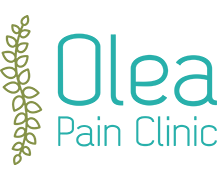Thoracic Back pain
The thoracic region of the spine is located in the upper part of the back. The thoracic spine connects the cervical spine above to the lumbar spine below. Your ribs are also connected to the thoracic part of your spine. The thoracic part of the spine consists of 12 vertebrae and these are identified as T1 through to T12. The thoracic spine protects the spinal cord, which is the bundle of nerves that transmit electrical signals throughout your body.
Musculoskeletal pain may arise from any of the thoracic spine and the surrounding structure. The commonest sources of spine pain are muscular problems, poor posture, joint dysfunction (facet joints), arthritis, osteoporosis, slipped disc with pinched nerves. These symptoms may cause radiation or referral from the spine into the back and forwards to the chest.
Repetitive motions, e.g. specific manual tasks, can increase the strain on particular muscles or joints and so put individuals at higher risk of developing myofascial pain. Medical specialists also believe that having a poor posture and stress may be a factor.
Facet joint pain can have a number of causes, including pressure overload of the joints, injury or wear and tear(aging). The joint could become strained an activity which an individual undertakes regularly, such as forms of physical exercise or manual work.
Management of Thoracic Back pain
Our individualised holistic approach:
Full history and assessment
Education about Thoracic back pain so you can take steps to manage the condition
Occupational and lifestyle advice
Medication review and optimisation
Physiotherapy and exercises enabled by the window of pain relief from medications and interventions
Psychology based treatments
Pain interventions:
Trigger point injections
Medial Branch Blocks
Radiofrequency Neurotomy of Medial Branches
Facet joint injections
If you have any of the following Red flags symptoms, it may signify a serious back problem and require urgent medical attention.
Sciatica in both legs
Numbness between thighs and genital region (saddle anesthesia)
Sudden weakness in the legs
Lose the ability to control your bladder or bowels
History of cancer
New onset pain at the age <16 or >50
Generally feeling unwell with weight loss, fevers, night sweats
Night time pain
Thoracic pain
Reduced level of immunity
Call 999 or go to your nearest A&E department if you are experiencing numbness or a pins and needles sensation between your thighs and genital region, sudden weakness in the legs, or lose the ability to control your bladder or bowels, as this could be a sign of a more serious and urgent back problem.
